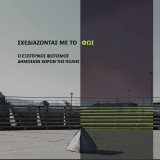The design of space and architecture can be both understood and shaped by light and its optical perception. Actually in the field of spatial design, light and its suitable application is regarded as a strategy of significant importance, especially at an urban scale that the rising number of the human activities taking place after sunset defines exterior lighting as a necessity for a better living quality. The direct connection between exterior lighting and human needs in terms of safety, orientation, optical recognition and aesthetic pleasure in combination with the rapid technological advance of the lighting techniques, which offer a great variety of possibilities, underlines the importance of organized exterior lighting of the pulic spaces in the cities. This can be achieved by a united designing strategy of lighting, a Lighting Masterplan, that offers multiple advantages when it is applied in practice. The first theoretical part of the special research topic analyzes the above mentioned design methology by examining different lighting proposals, while it also determines the basic knowledge about lighting, the light sources and the luminaires. Furthermore, there are described the existing european norms and the practical regulations concerning the demands about suitable exterior lighting and the restrictions about it. Apart from the theoretical research, the topic is perceived through a more practical scope by the measurements of the levels of horizontal iluminance and the lighting proposal with the tools of digital programs of calculation and representation. Consequently, in that second part is presented the area of the lighting proposal, whereas are studied the measurements that are done on the site and is represented digitally the final lighting proposal. Concerning the chosen area, the university campus of Pedion Areos was thought as adequate, because of its historical importance for the city of Volos, its situation at the entrance of the city, as a landmark, but also because of the intimate connection of its morfology and use with the characteristics of the strategy of the Lighting Masterplan, that is studied. Finally, the last part of the reasearch topic provides the overall conclusions by commenting on the proposed lighting solution and by making a reference about the future development and use of exterior lighting for the purpose of an improved everyday life and a better protection of the environment.
